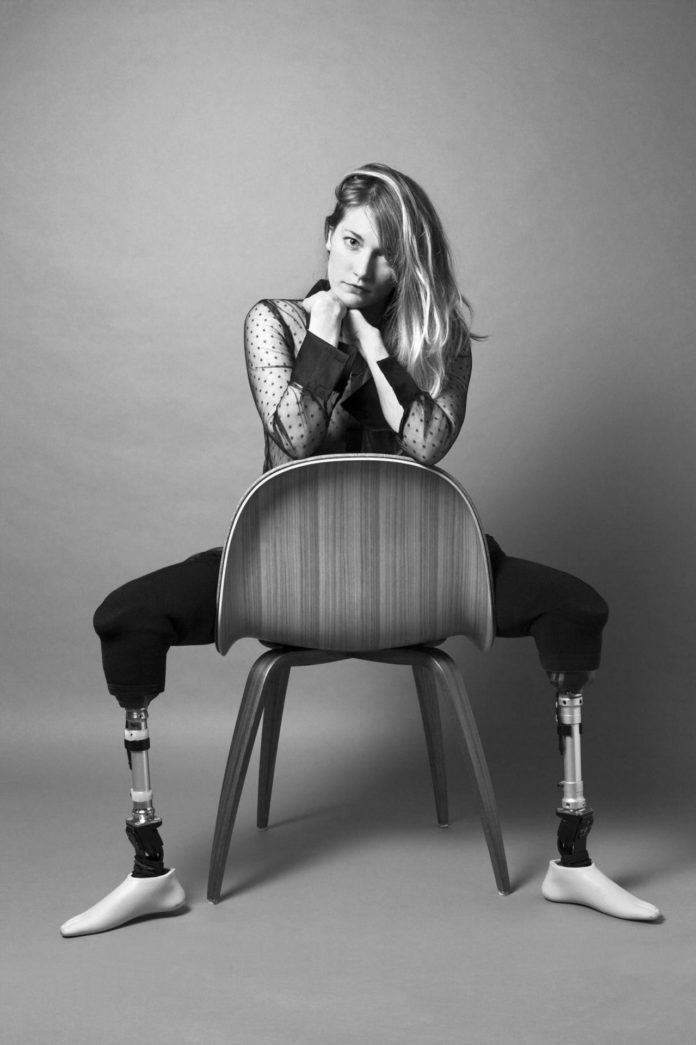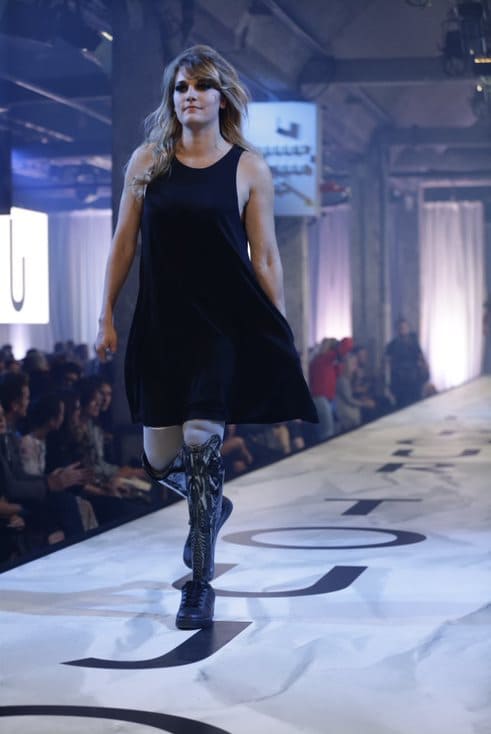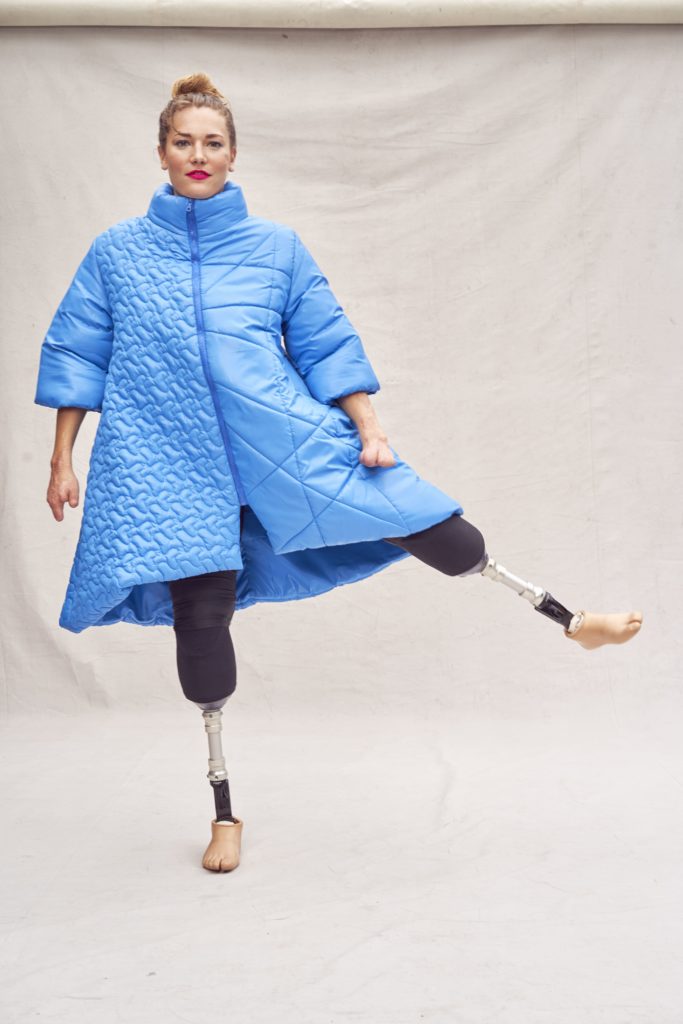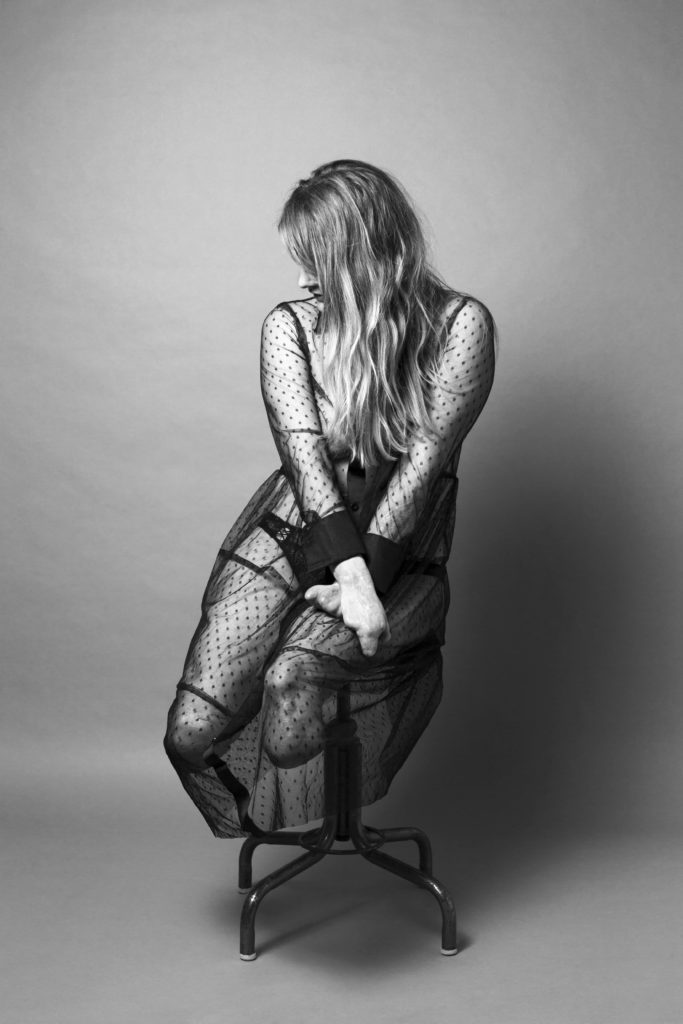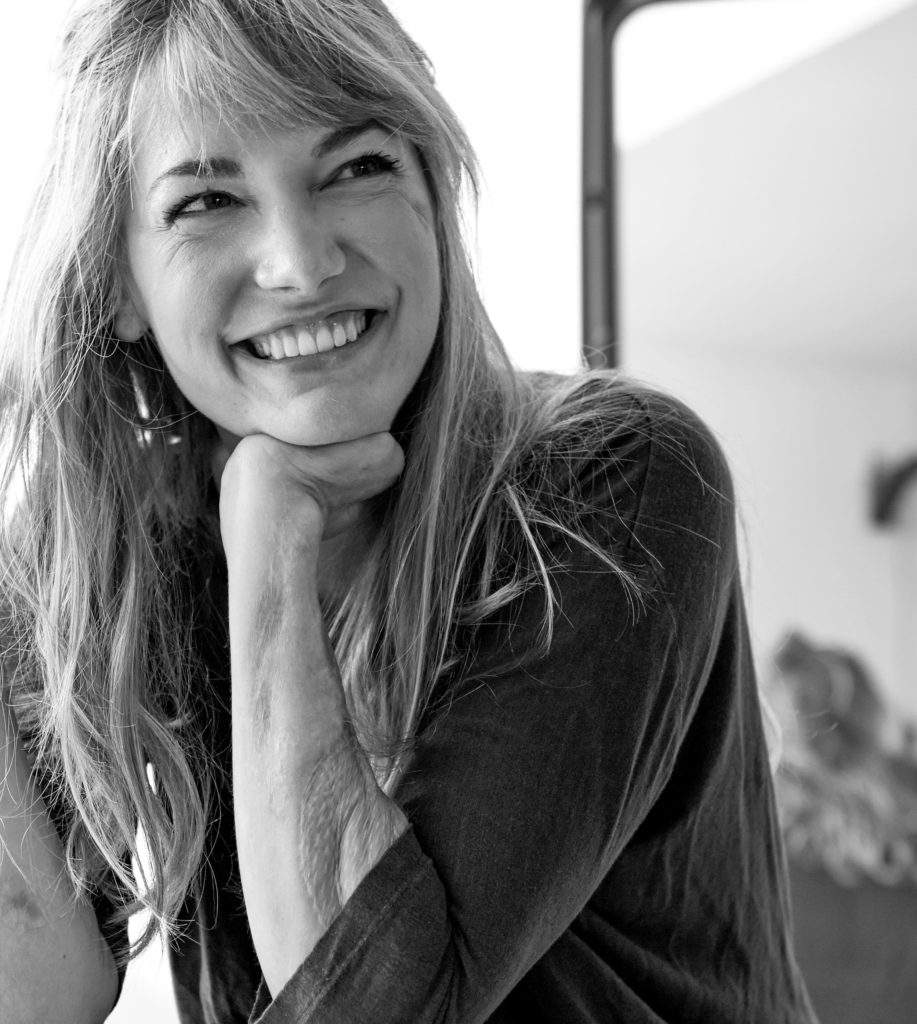Becoming a model? “I never dreamed of that”, recognizes Pernelle Marcon. Her life led her to the podiums unexpectedly. In 2012, at the age of 19, she lost her legs and her hands due to lightning meningitis. Until then, more aware of the feminist struggle, she discovered the discriminations that disabled people face and became a model to fight the stereotypes. When she walks on the podium, she considers herself more as an activist, “partisan” of an inclusive fashion than a top model.
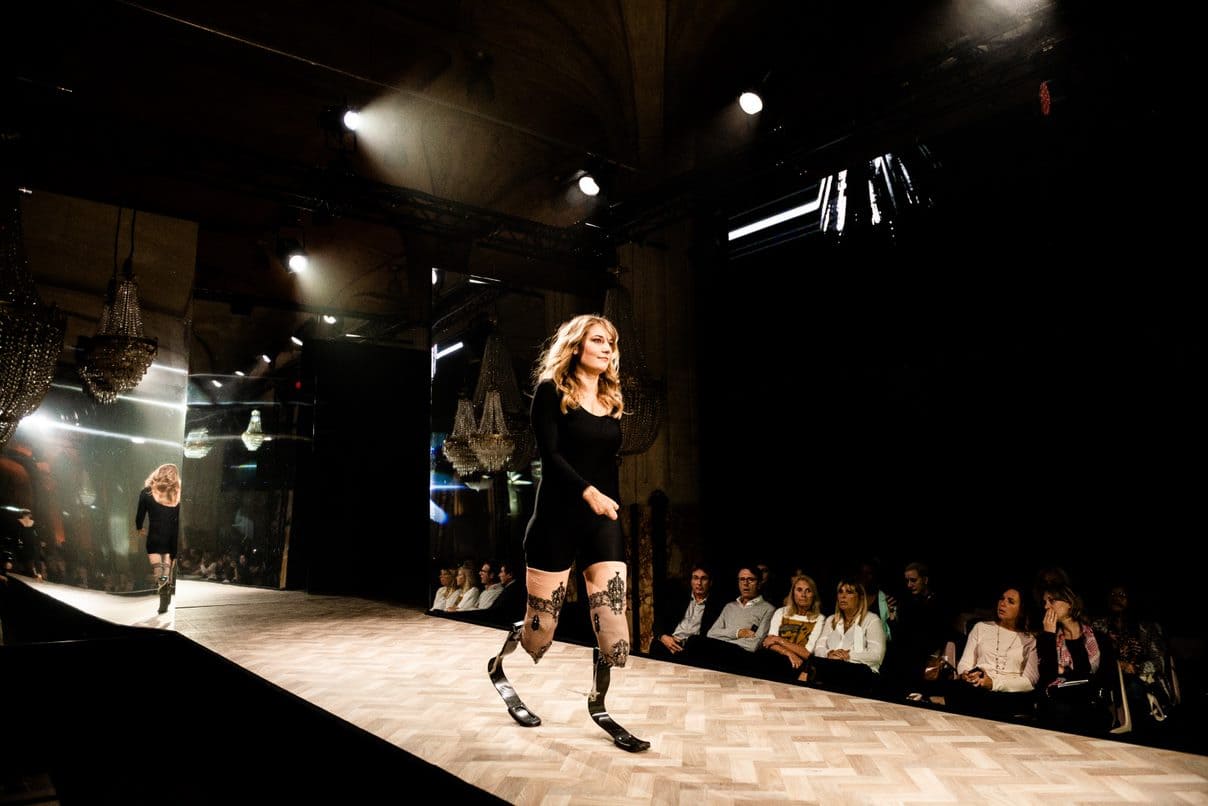
Photo by Clément Decoster
Everything began in 2018 with U-Exist, a brand of a custom prosthesis. Without a communication budget, the creator asked her to pose for photos. “It was a social project that for me was really engaged and useful”, she remembers. Since that time, she walks on podiums from time to time for independent brands and fashion schools while keeping a professional activity in a community education association.
Convictions before catwalking
A few months later, this militancy led Pernelle Marcon to join Wanted, an organization specialized in recruiting unusual models. At first sight, this recruiter’s website can be surprising. Photo portraits are displayed with heading containing explicit words such as: “Albinos”, “Scars”, “Disability” or even “Transgender”. A categorization that at first deterred the young woman.
She admits she thought for a while that the label “disabled” was degrading. “I was not born with a disability. Thus, it’s not something I particularly identify with.” And she tempers: “That is what happens with ‘normal’ models. That is a body objectificationWhen a person or her/his body is treated as an object.. Except that here, they use words that will make people cringe.” According to her, practices should be paid and valued rather than remaining in a voyeuristic logic, as may have been the case in the freak shows of the 19th and 20th centuries.
Photo by Clément Decoster (left) / Photo by Ricardo Montoya (right)
For this activist, we must not delude ourselves, showing those bodies that we do not see that much, represents a marketing interest. “If this strategy can make people less sad, it’s better”, said the activist. She regrets anyway that most of the advertising campaigns where we can see disabled people still convey a lot of stereotypes, especially when they represent them as superheroes. “Disabled people can not identify themselves with that at all.”
Disabled people and big invisibilities
The identification of the consumer with the model is fundamental for the top model: “You don’t see many different bodies in fashion, commercials, cinema, or performances in general.” She points out that “it is very important to have people who represent diversity, to make visible people who tend to be invisible”. A practice that no longer has its place in our era, when movements of celebration of different bodies are born.
Photo by Ludovic Sarmento (left) / Photo by Yann Bar (right)
However, the body positivitySocial movement rooted in the belief that every human being should be accepted no matter their body shape. trend which is Anglo-Saxon, struggles to take roots in France. “We do not have the same relationship to our body, explains Pernelle Marcon. “Social constraints are overthrown with difficulty, we like conventions, it’s historic.” She recalls that in the United States, the disabled demonstrated for their rights in the 1990s, something that did not happen in France. At least not yet, since new technologies could change everything. Little by little, less standardized discourse is emerging, especially on social media, which makes certain claims more audible.
Pernelle Marcon wants to be optimistic: “I think that having the Internet and the possibility to express oneself and gather, even if it’s virtual, will probably change the rules of the game.” For her, the mere individuals’ desire to see more disabled bodies will not be enough to change people’s outlook. The ball is in the creators and fashion agencies’ court.
Translated by Mélinda Moussinga
To discover the other articles of this series, click here…




